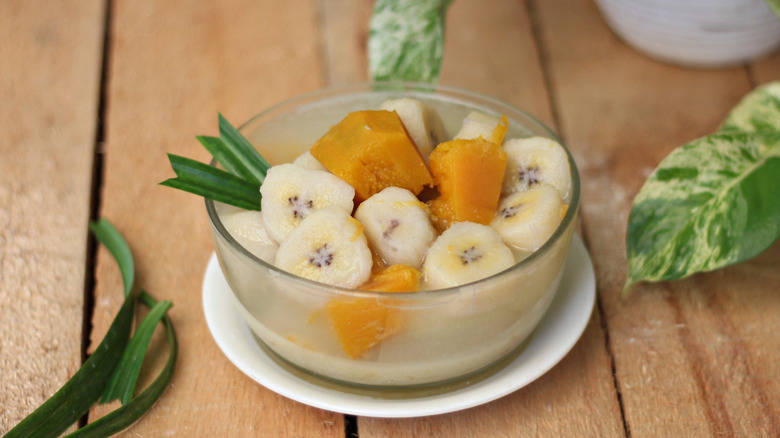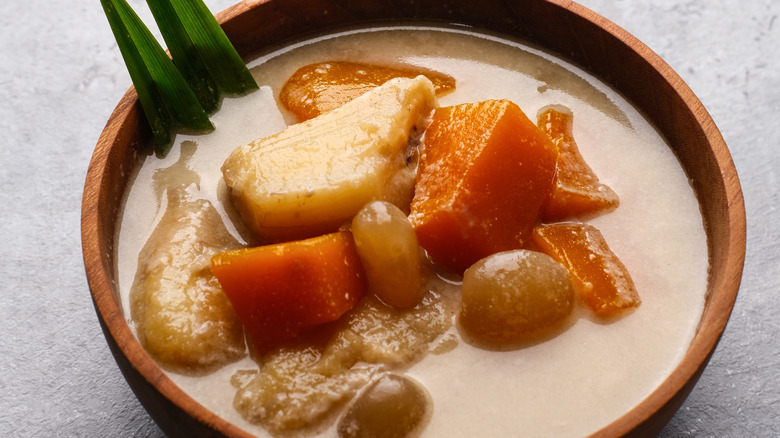What Is Kolak And What Does It Taste Like?
The English language finds it flat out hard to describe kolak. One academic book insists that it's a "soupy type" of food (via The Malays in Australia). Lonely Planet's Indonesia travel guide prefers to describe it as a "smoothie," although its ingredients are not blended into a uniform slosh. The Jakarta Post doesn't attempt to define it. It's a "flexible dish" to the newspaper, but more importantly, a well-loved tradition. Kolak is not something exclusive to Ramadan, but during Ramadan in Indonesia, Muslims eat it as "tajil," which are sugary snacks and drinks used to break fasts.
Like there are infinite varieties of ice creams, there are a whole lot of different kinds of kolak. Its base is mostly a constant: a cooked combination of coconut milk, palm sugar, and sometimes pandan leaves (via Taste Atlas). The latter are sweet, and according to The Market Experience, as important to eastern cuisine as vanilla is to western. To the base of kolak, ingredients are added for character, flavor, and, nutrition: plantains, sweet potatoes, cassava, pumpkin, jackfruit, or tapioca, according to Taste Atlas; jackfruit, banana, or mung bean says Kitchn.
What does kolak taste like?
Could you describe the taste of ice cream? Maybe, but only the basics. Such is the case with kolak, although, unlike ice cream, you can eat kolak hot, cold, or at room temperature (via Indoindians). Kolak's coconut milk and palm sugar base is sweet, thick, and sauce-like. But as to what, exactly, kolak tastes like, the answer depends on what ingredients or combination of ingredients are used. Unless, that is, you get poetic about it. As one Google-translated Instagram post reads: "eat kolak first so you can learn how to speak sweet words."
Because, like ice cream, it's much easier to talk about how feverish and almost kid-like people get when they think about the sweet dish. Around Ramadan, social media goes bananas over it. As one Twitter user celebrates: "few days away from unlimited supply of kolak everyday im excitedddd." An (again Google-translated) Instagram post describes it as "a mandatory menu-[item] on everyone's dining table." And, on her blog, "Marvellina," associates kolak with "vivid" childhood memories of family trips to market stalls. "No doubt this is one of my favorite Indonesian desserts," they write.

